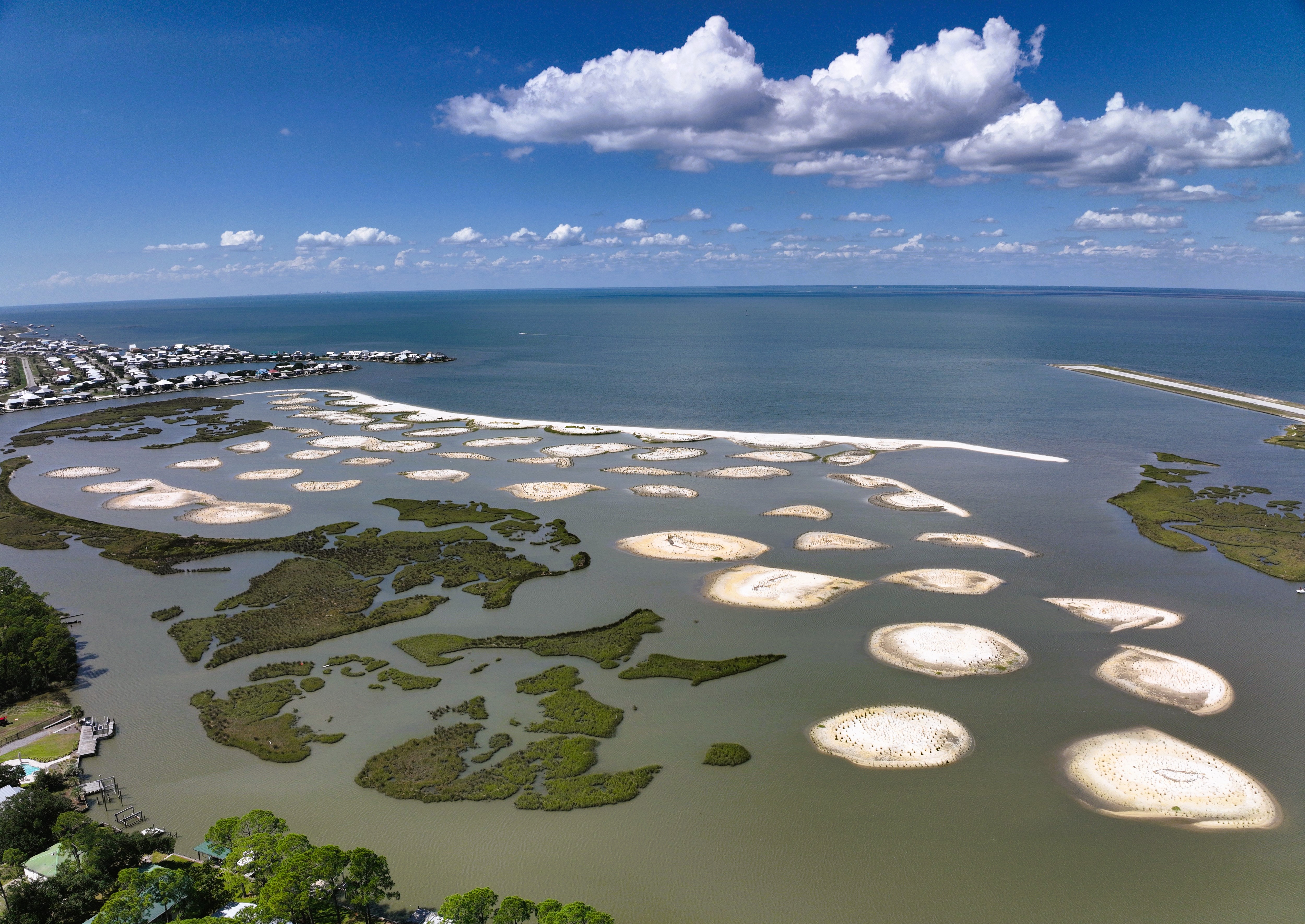
The Graveline Bay Marsh Restoration Project restored 60 acres of back-barrier marsh in Graveline Bay, Alabama, an estuarine system that provides critical storm protection for upland communities and habitats. Historical analysis shows the bay has lost nearly 40 percent of its marsh since the 1950s, leading to the loss of natural defenses and key ecosystems.
Moffatt & Nichol was contracted by the Town of Dauphin Island to lead grant writing and management, engineering and design, and permitting. Using bathymetric and geotechnical data, the team designed a system of 55 marsh mounds arranged to mimic natural geomorphic features. The design included 45 smaller mounds shielded by 10 larger wave-attenuating mounds, reducing energy from storms while creating diverse habitat zones.
Construction involved dredging and placing 270,000 cubic yards of sand from a nearby borrow site, stabilized with 600 cubic yards of recycled oyster shell. More than 80,000 native marsh plants were installed across intertidal and high marsh elevations, creating a mosaic of submerged and emergent habitats.
The restored area now provides 30,000 linear feet of new marsh edge, 26 acres of intertidal marsh, 5 acres of high marsh, and 29 acres of shallow-water fisheries habitat. Within months of construction, the site supported blue crab, speckled trout, migratory shorebirds, and nesting diamondback terrapins.
Moffatt & Nichol supported the Town through funding, bid-phase assistance, construction administration, and post-construction monitoring. Adaptive management, including supplemental planting in 2024, ensured the long-term ecological performance of the project in line with Engineering with Nature principles.
This project was funded by the National Fish and Wildlife Foundation Gulf Environmental Benefit Fund to remedy harm from the Deepwater Horizon oil spill.


